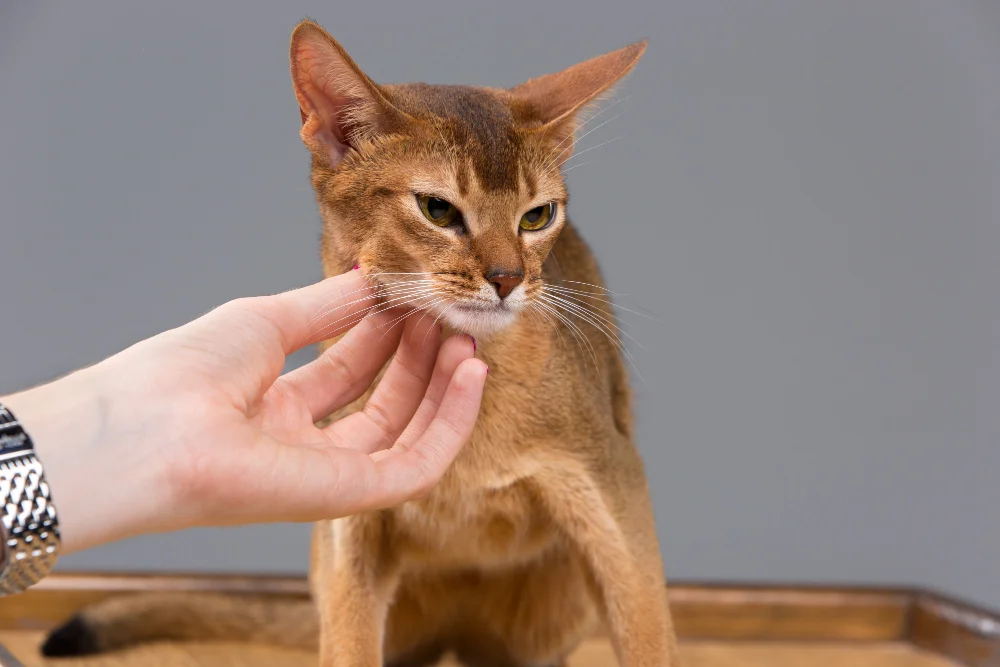What Does a Cat’s Purring Actually Mean?

Have any of you ever wondered what’s really going on when your feline friend starts that soothing purr? I know I used to think cats only purred when content, but as it turns out there’s more to the story. Let me shed some light on the fascinating science behind a cat’s purr.
Soothing Vibrations
The sound we hear as a purr ranges from 25-150 Hertz, or cycles per second. For reference, that’s closer to the low frequencies of a lion’s roar than a dog’s bark. These vibrations are produced by a special vocal organ called the laryngeal nerve, which causes the cat’s voice box and diaphragm to oscillate. But unlike other vocalizations, purring can occur both on inhaling and exhaling.
A Multipurpose Adaptation
Scientists believe purring evolved as a way for cats to self-soothe, but it may provide other advantages too. The vibrations could help mend bones or regulate a cat’s heart and respiratory rates. Nursing queens purr to comfort kittens and stimulate their development. Intriguingly, the frequency of a purr can also boost bone density, tendon growth, and circulation – potentially aiding both young and adult cats with healing.
Not Just for Pleasure
While we often associate purring with contentment, cats also purr in stressful or painful situations. They purr on the operating table and even as they breathe their last. Some researchers think purring may act as a sort of “acoustic camouflage” to mask distress or vulnerability from predators. This suggests purring isn’t always a sign that “all is well” as we assume.
So What Does It Really Mean?
The truth is, a cat’s purr can have multiple meanings depending on the context and health of the cat. It’s usually a sign of relaxation or bonding, but may also serve biological purposes or mask unease. So the next time you hear your furry friend’s motor running, appreciate it as a unique vocalization with benefits beyond what meets the ear!
Questions About Cat Purring?
Do All Cats Purr?
Nearly all cats have the ability, though some may purr more than others. Newborn kittens cannot purr yet need the stimulation, so queens may purr to help them.
What’s the Oldest/Youngest Cat Known to Purr?
The oldest cat to purr was Crème Puff at 38 years old. Kittens can start purring at just 3 weeks for bonding, but the laryngeal nerve develops fully by 7 weeks.
Do Cats Purr Differently in Various Situations?
The pitch may raise or lower slightly based on mood, but the frequency typically stays within the same soothing range. Loudness can vary more noticeably.
Why Do Some Cats Seem to Purr Louder?
Individual anatomy and health affects purring, but louder purrs aren’t necessarily happier. It may relate more to bonding needs or using purring to aid recovery from illness/injury.
Can Humans Purr or Other Animals?
While some people claim they can purr, humans lack the anatomy. No other species has the unique vocal organ. The closest is cheetah chirping, but it serves a different purpose than a cat’s purr.
In Conclusion
So in wrapping up our talk about the incredible phenomenon of cat purring, I hope I’ve shed some light on what this fascinating behavior truly means. While relaxation is often the case, purring clearly serves cats in complex biological ways beyond what we can perceive. The next time you hear your feline friend’s motor running, appreciate this special adaptation with benefits that even science still fully understands. Let me know if any other cat questions come up!





